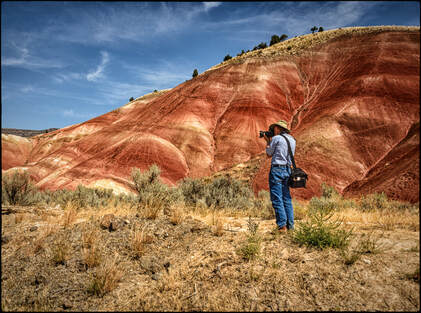Phil Coleman

I am a visual artist whose favorite "brush" is a camera. Just as a painter's brush is simply a tool needed to create the painting, so is a camera merely my tool with which I make my "painting." With every photograph I take, my goal is an image that will resonate in your mind, that strikes a visual "chord" in you like a great song.
When I click the shutter, I am only beginning the process of altering the "reality" of the scene that is already distorted by where I stand, the lighting, the technical details of the lens and focus, what I put in the viewfinder, etc. To complete the process, I use the digital darkroom to overcome the limitations of the camera. The final print should convey a feeling about the world that was before me when I took the picture. But my intent is not to document that world.
There is a long history of the difference between the original photograph and the final print. For example, many of Ansel Adams most iconic prints were dramatically altered in his darkroom to get what we now see. So while I make many prints that most viewers would say is a rendition of "reality," they are unaware of how much I may have changed that "reality" to represent what I really felt when I clicked the shutter. Hence I am always alert for a scene that I hope to transform into a visually interesting print that, clearly or subtly, is an "altered" reality.
When I click the shutter, I am only beginning the process of altering the "reality" of the scene that is already distorted by where I stand, the lighting, the technical details of the lens and focus, what I put in the viewfinder, etc. To complete the process, I use the digital darkroom to overcome the limitations of the camera. The final print should convey a feeling about the world that was before me when I took the picture. But my intent is not to document that world.
There is a long history of the difference between the original photograph and the final print. For example, many of Ansel Adams most iconic prints were dramatically altered in his darkroom to get what we now see. So while I make many prints that most viewers would say is a rendition of "reality," they are unaware of how much I may have changed that "reality" to represent what I really felt when I clicked the shutter. Hence I am always alert for a scene that I hope to transform into a visually interesting print that, clearly or subtly, is an "altered" reality.

I live near Corvallis, Oregon with a view of the beautifully forested coastal range. A good part of many days is spent taking photographs and preparing them for prints. Years ago, I used a chemical darkroom to work with black and white film. My freedom was already limited by the film's characteristics. For color, my options were even more limited. Plus I had to rely on an outside lab, Kodak or Fuji, etc. to see the final result as a slide or print. Now the digital camera and darkroom combined with a high quality printer give me full control from the moment I click the shitter until I make the final print. Sometimes my photos go (almost!) straight from camera to print. Yet often, I make drastic changes before the print appears. But all the time I want to delight (or puzzle!) the viewer's eye with color, shape and texture, perhaps of ordinary things seen in a new way.
My favorite subjects? Unique moments, whether of a place in nature, a striking flower or the people and places I see on my travels.
My favorite subjects? Unique moments, whether of a place in nature, a striking flower or the people and places I see on my travels.
